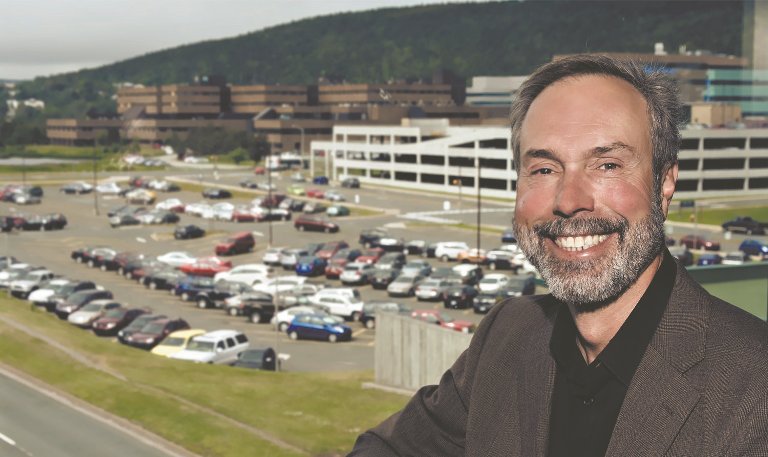Memorial advances core sciences infrastructure project
Memorial University has decided on the location of planned core sciences infrastructure on its St. John’s campus.
 While there was some discussion to situate the new facilities on two different campus locations, the university will move forward with the single-site option. The new building, which will be located on the north side of campus, on what is now Lot 16/16A, will house various units within Memorial’s faculties of Science and Engineering and Applied Science.
While there was some discussion to situate the new facilities on two different campus locations, the university will move forward with the single-site option. The new building, which will be located on the north side of campus, on what is now Lot 16/16A, will house various units within Memorial’s faculties of Science and Engineering and Applied Science.
“The single-site option was chosen primarily because of the cost of construction,” said Dean of Science Mark Abrahams. “Lot 16/16A next to the University Centre was the only green-field we considered that could reasonably accommodate the entire facility.”
The single large building will promote consolidation and complementarities among the different types of science research as the university moves towards a more interdisciplinary model.
“The Faculty of Engineering and Applied Science is currently in the second year of its eight-year growth plan for the doubling of our academic and research capacities,” said Dr. Greg Naterer, dean, Faculty of Engineering and Applied Science. “The new building will allow for additional engineering space to meet the province’s need to expand engineering undergraduate, graduate and research activities in areas of ocean technology, offshore petroleum and Arctic resources.”
In late 2012 Memorial retained the consultant team of Stantec Architecture in association with Resource Planning Group Inc. (RPG) to conduct a functional space planning study of the core sciences project.
Their project tasks included defining the type of work to be conducted in the building, the space necessary to accommodate these functions including a facility program, a potential building design and an order-of-magnitude project cost estimate.
Memorial officials received the final draft of the functional space planning study in May and it is now being reviewed. One preliminary concept has already been presented to the core sciences building steering committee for discussion. That committee is being chaired by Kent Decker, vice-president (administration and finance).
“The committee has looked at the basic concept for the combination of efficiency of design, both in terms of mechanical systems for the building as well as the layout to make the best use of our most valuable resource, the people inside the building,” said Dr. Abrahams.
Once approval for architectural planning has been granted, it will take at least another year for that process to take place, with an additional four-year build time.
“Simply opening this building is not the end of the project,” said Dr. Abrahams. “It has a domino effect on the entire campus. As that building opens, we will decant units into the building, which frees up space that will then trigger renovations within existing buildings.
“Those buildings for the most part are still in good shape. They just don’t work as lab buildings anymore. They can’t carry the heat load and we have difficulty with ventilation systems. But if those demands are no longer placed on the buildings, they can still function as office space, dry lab space, etc.”
While existing laboratories for the Faculty of Engineering and Applied Science will remain in the Engineering building and the Bruneau Centre for Research and Innovation, the new core sciences facility will create additional engineering office, design project studio and laboratory space to accommodate a portion of the overall engineering expansion.
“New large full-scale ice mechanics, offshore petroleum and drilling, Arctic ocean, renewable energy and marine testing facilities, among others, are planned for the new building,” said Dr. Naterer. “We are now assessing which disciplines will take up space in the new building.
“Our goal is to make the transition as streamlined and cost-effective as possible and to base our decision on what makes the most sense financially while retaining important synergies among disciplines.”
The issue of adversity presented by aging infrastructure has presented the university with an opportunity to make improvements and to rethink how people come together to share information and resources, said Dr. Abrahams. Those issues have been a part of the planning process.